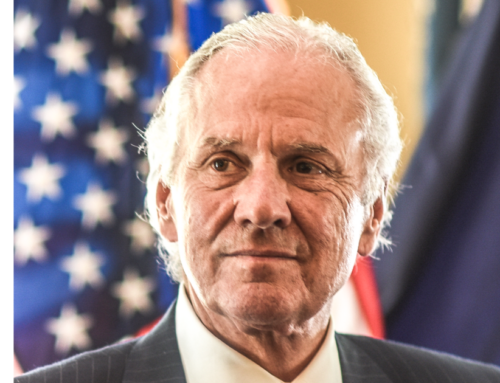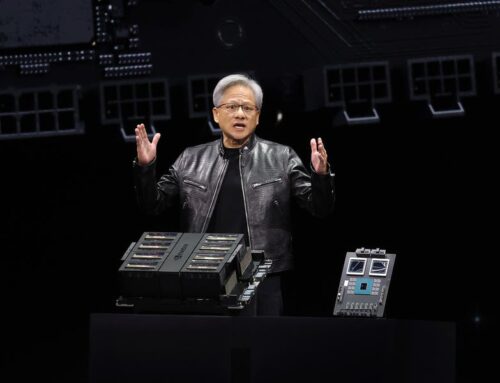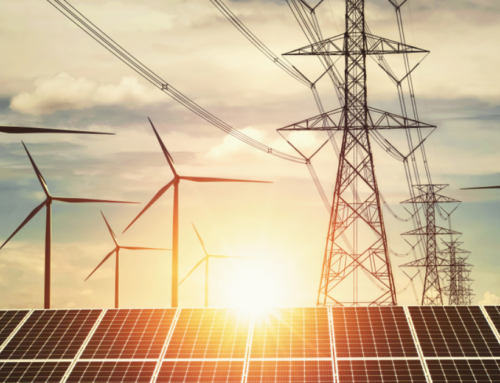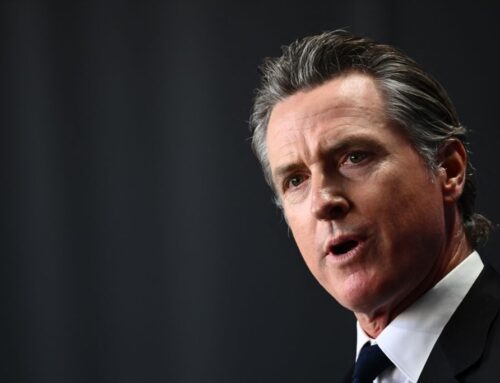BLM Plan for Solar on Public Lands Sparks Enthusiasm and Misgivings in Different Corners of the West
September 24, 2024
In a remote stretch of Nevada’s Great Basin Desert lies the site where white settlers and the U.S. government massacred the Newe people 11 times during the 19th century. Three of the slaughters are among the largest recorded massacres of Native Americans in U.S. history, with the worst killing an estimated 525 to 700 men, women and children.
But Native peoples continue to fight there today to protect the area itself.
For centuries, thousands made the pilgrimage to the site, Bahsahwahbee, to gather food, hunt and celebrate each year. Today, it remains a sacred space for local tribes and a graveyard where swamp cedars grow out at elevations far below where they typically are found, a sign their ancestors’ spirits remain in the trees, tribal elders say.
Delaine Spilsbury and her son Rick, both elders of the Ely Shoshone Tribe, have advocated for Bahsahwahbee’s protection for decades as the area was proposed for development as part of a missile transportation tract, for an oil and gas development and with a controversial water pipeline to Las Vegas. This year, it seemed the area was on the verge of finally being protected, after years of work from the Duckwater Shoshone Tribe, the Ely Shoshone Tribe and the Confederated Tribes of the Goshute. Their efforts to turn the area into a national monument garnered wide support across Nevada, leading Sen. Catherine Cortez Masto to introduce legislation this year to protect the area.
But on Aug. 29, the Bureau of Land Management published the final draft of its updated Western Solar Plan, a federal assessment of the suitability of 11 Western states’ lands for utility-scale solar development. In it, 7,000 acres of the proposed monument’s boundaries would be made available for solar farms.
“It’s really disappointing that [the BLM would] rather give the property to a corporation than show some respect for the people who died there,” Rick Spilsbury said.
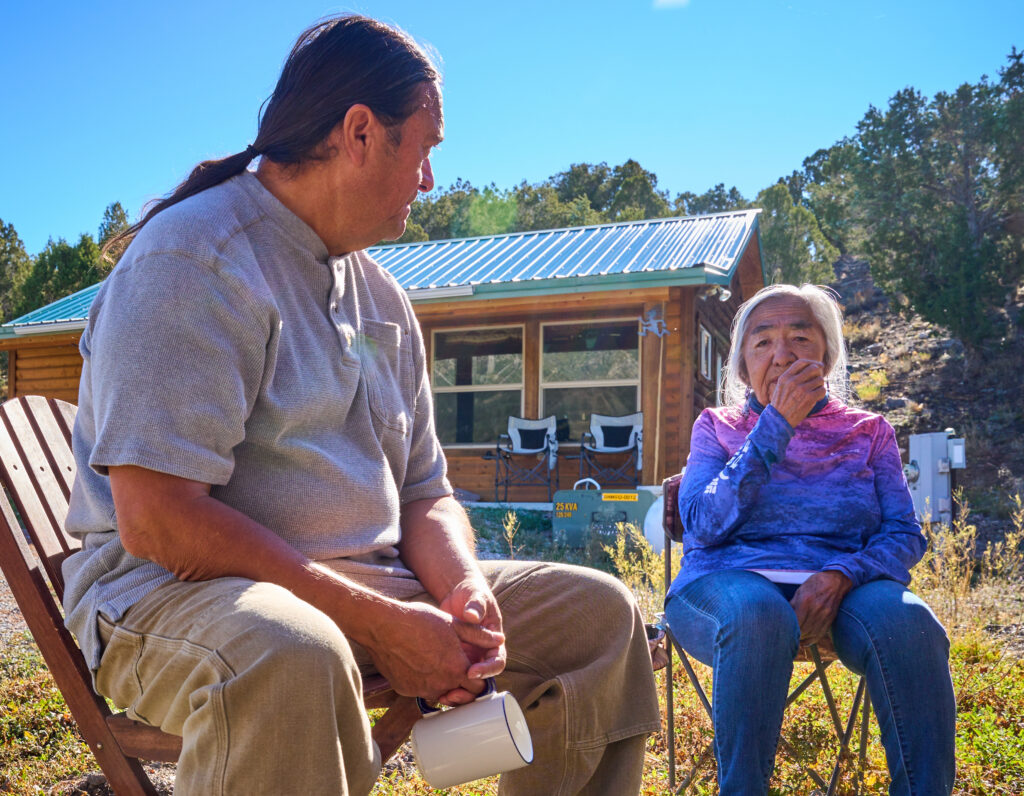
In the West, the BLM plans to make available to solar developers almost 32 million acres, a total area about the size of Mississippi, which would be a big boost to the nation’s clean energy transition. Climate and clean energy groups at the national level largely praised the decision, but environmental groups and tribes at the state level see it as far too deferential to industry. The goal of the updated plan—which was first implemented in 2012 to create “solar energy zones” across just 285,000 acres in Arizona, California, Colorado, Nevada, New Mexico and Utah—is to drive “development closer to transmission lines or on previously disturbed lands” in order to streamline solar projects across the vast federal lands found in the West, according to a press release accompanying the updated plan. But the plan also commits to “avoiding protected lands, sensitive cultural resources and important wildlife habitat” in the lands it opens to harvest energy from the sun.
Public lands have long been embroiled in bitter disputes over development plans, historically from mines, the oil and gas industry, logging and ranching, and increasingly from the presence of large wind or solar farms. In its final draft, which covers Arizona, California, Colorado, Idaho, Montana, Nevada, New Mexico, Oregon, Utah, Washington and Wyoming, the BLM designated 130.3 million acres of land as untouchable by the solar industry, given the presence of big game, poor access to transmission lines or other local environmental concerns.
But even as the agency prepares to make vast swaths of Western public lands unavailable for solar development, other portions of those spaces are increasingly key cogs in the nation’s clean energy buildout.
“The [Biden] administration is looking at it as: ‘public lands have to play a role’ in growing clean energy,” said John Leshy, former general counsel of the Department of Interior under President Clinton and author of several books on public lands.
The plan makes more than 4,000 percent more land available than the solar industry would ever need in order to give developers and the public flexibility for site selection and evaluation. But with the BLM expecting solar development to use just under 700,000 acres of public land by 2045, many environmental groups are asking why the agency set aside such a vast amount of land in the first place.
“The idea that this is balance, that this is low conflict permitting, is just a farce,” said Patrick Donnelly, the Great Basin director for the Center for Biological Diversity. “It’s totally inaccurate.” Across the 11 Western states are multiple intact and biodiverse landscapes where solar development could now be streamlined, he noted.
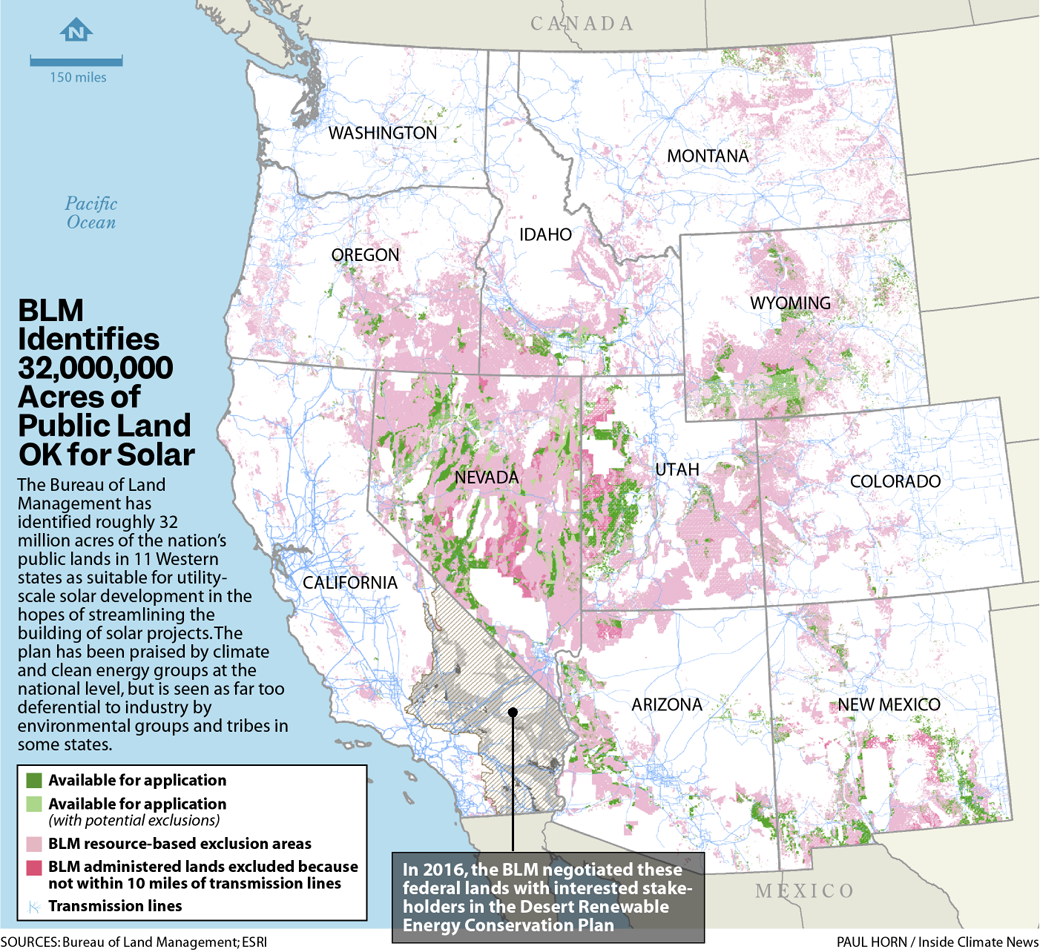
But just because an area has been opened to solar development does not guarantee that any developer will be granted permits to build there. The BLM is “preserving all of their legal authority to say ‘no’ to a project that’ll really screw up some area,” Leshy said. Still, if it were up to him, Leshy said he wasn’t sure he would have made that much land available to the industry.
Nevada and Wyoming are particularly emblematic of the different regional responses to the agency’s plan. In Nevada, tribes and environmental groups are concerned the plan will turn what are currently wide-open stretches of the Mojave and Great Basin deserts into sacrifice zones for the renewable energy transition. But Wyoming environmentalists, long used to working within the confines of the state’s fossil fuel economy and development-friendly culture, have welcomed solar development on public lands, despite being wary of how much space the BLM has made available.
A Boon to Big Game in Wyoming
Conservationists in Wyoming commended the BLM’s plans for solar development in the Cowboy State, though it is far from a perfect outcome, they said.
“It’s a remarkable update for the state of Wyoming,” said Julia Stuble, the Wyoming state director of the Wilderness Society. Given all the areas excluded from development across the West for big game, Stuble said she has “much more trust” going forward that solar energy will be sited without causing harm to wildlife in Wyoming.
Almost half of Wyoming is managed by the BLM, and the updated plan closes off millions more of those acres to solar development than the agency’s various resource management plans had made available. Now that the agency has streamlined and updated its plan, 3.8 million acres are on the table for development in Wyoming, down from 15 million.
The presence of big game, including bighorn sheep, elk, mule deer, pronghorn and white-tailed deer, among others, accounts for many of the exclusions, which apply to all 11 Western states under the plan.
“When I’m weighing what could happen and the status quo we’re under, it’s such a massive improvement,” Stuble said.
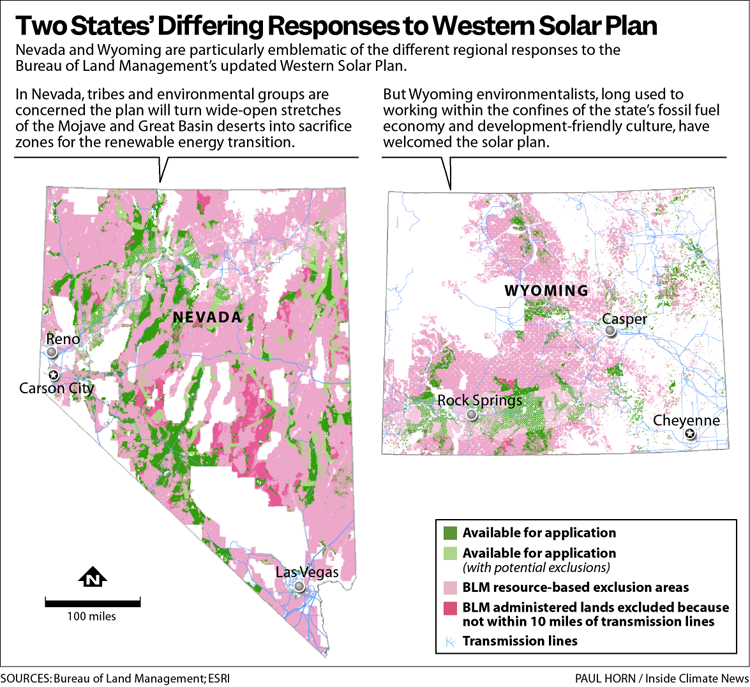
Environmental organizations in the state were monitoring the updated Western Solar Plan closely after one of Wyoming’s few utility-scale solar facilities—the state has only two—was sited in an area where it has had a “detrimental” impact on wildlife, said John Burrows, energy and climate policy director at the Wyoming Outdoor Council. “We have a pretty incredible big game wildlife resource here,” Burrows said, and when their migratory patterns are disrupted, they do not necessarily come back.
When the Wyoming Outdoor Council saw the BLM’s big game exclusions, “we felt heard,” Burrows said.
If new big game data were to identify additional habitats or migration corridors, those areas would also qualify as off limits to development if they met the BLM’s criteria for exclusion, according to the plan. Its responsiveness to new information regarding the movement of big game across the West “is really good because it takes a long time for land use plans to get updated,” said Justin Loyka, an energy program director with the Nature Conservancy’s Wyoming chapter.
Still, both Loyka and Burrows said they were disappointed by the amount of land the BLM had made available in Wyoming, even as it was greatly reduced from the agency’s initial plan.
“We think that the plan could have been more prescriptive, for sure,” Burrows said. When you only expect half a percent of all public lands in the West under BLM jurisdiction to ever see solar development, why make so much acreage available, he asked?
In Wyoming, misinformation has been swirling around the updated western solar plan since its release last month. One state senator falsely said the plan would “drastically increase the amount of land available for solar energy development,” and close public land for recreation and other activities. In reality, there will be no “gold rush” of solar development in the state due to this plan, Loyka said. “That’s just not true.”
This story is funded by readers like you.
Our nonprofit newsroom provides award-winning climate coverage free of charge and advertising. We rely on donations from readers like you to keep going. Please donate now to support our work.
Burrows speculated that a few dozen utility-scale solar projects would be built on public lands in Wyoming in the next two decades. And the nature of renewable energy, with fewer moving parts than fossil fuel infrastructure across a large area, makes it easier for organizations like the Wyoming Outdoor Council to monitor new development, he said. “That’s an interesting contrast from oil and gas, where they have thousands of potential wells developed over a period of time like that,” he said, “and it’s much harder at an individual level to gauge.”
Regardless of how much of it is built, large-scale solar will always draw environmentalists’ attention in Wyoming, advocates say.
“The implementation is going to matter,” said Stuble. “The devil is always in the details.”
In Nevada, Environmentalists Prepare for ‘A Whole New Reality’
Donnelly, with the Center for Biological Diversity, said the proposed plan is a “watershed moment” for Nevada and the West representing “a whole new reality,” with the amount of land opened for utility-scale solar development setting the stage for environmental conflicts.
Previous plans were for much smaller areas, intended to identify a few spaces best suited for solar development. Now, millions of acres will be made available, many in sensitive areas, he said.
“We can find a million acres for solar, that’s no problem,” Donnelly said. “So why does it need to be 31 million? Why does it need to target all these very special places? And we can easily get this stuff done without those sensitive places being targeted. No explanation was ever provided for that, other than industry flexibility, which really implies that industry’s in the driver’s seat here.”
The scale of potential solar development in Nevada under the proposed update of the Western Solar Plan is far greater than any other state. That’s because nearly 80 percent of the state is federal land—much more than any other state—leading to nearly 12 million acres, or a third of the entire plan, being found in Nevada. Donnelly said his organization plans to advocate for the protection of the most sensitive places vulnerable to development.
“We can find a million acres for solar, that’s no problem. So why does it need to be 31 million? Why does it need to target all these very special places?”
— Patrick Donnelly, Center for Biological Diversity Great Basin director
Development is likely to get hot fast in some areas, like the Amargosa watershed, one of the most biodiverse places in the country and home to Ash Meadows National Wildlife Refuge and Death Valley National Park, where solar and transmission lines are already rapidly being proposed.
Great Basin National Park would become “a protected island in the middle of an industrial wasteland,” Donnelly said.
But the tribes advocating for the creation of the Bahsahwahbee National Monument, not far from the park, only learned some of the opened area would cut into the proposed monument’s boundaries when the BLM released the plan on Aug. 29.
“BLM knows that our Tribes are working to have President Biden preserve and commemorate Bahsahwahbee as a national monument within the National Park System,” Amos Murphy, Chairman of the Confederated Tribes of the Goshute Reservation, said in a statement. “They also know the area is a Traditional Cultural Property listed in the National Register of Historic Places. We don’t know how or why they suddenly went from this place being a nationally significant historic and cultural site to targeting it as an industrial development zone, but our plan is to advocate that the President take action.”
Delaine and Rick Spilsbury said their goal has been to protect the place before it’s too late. Delaine’s grandmother and a friend were the only two to survive the last massacre at Bahsahwahbee, after they left the area during the fall harvest in 1897 only to return to see vigilantes attacking their friends and family.
“They killed everybody,” Delaine said.
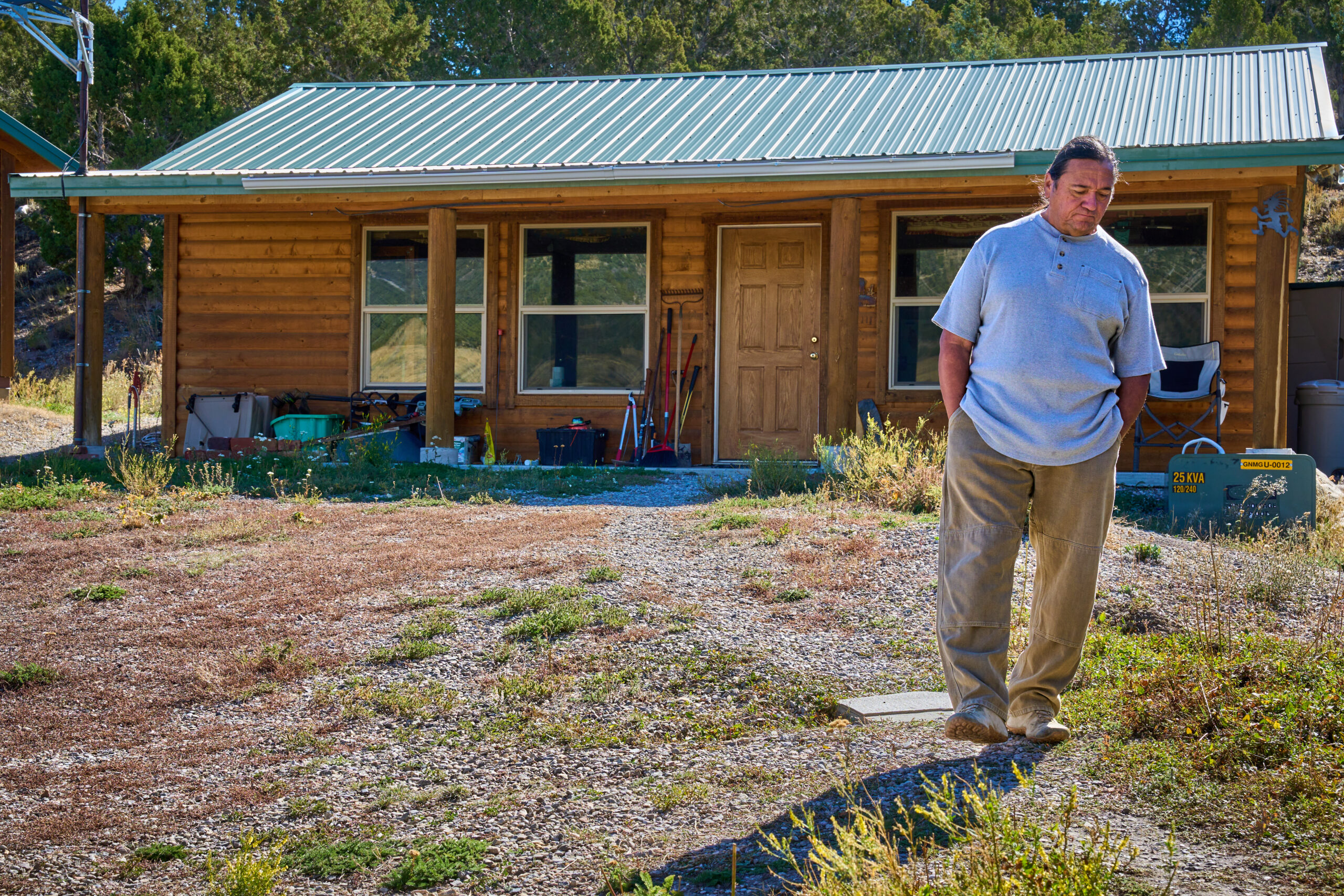
For years, those who did survive did not speak about what happened at the site—the killings were too recent. As a result, many tribal members never knew what had happened, she said, and the massacres were never taught about in schools. But the threats of development on the land where they occurred have led the Spilsburys to speak up to share their history before it is forgotten.
“There’s no point going to a national monument with a bunch of dead trees, especially when the trees literally have our ancestors’ remains in them,” Rick said. “This is a cemetery. It’s a shrine. It’s a very important place historically. It’s not like the Indians are trying to get the land back. We think we already have the land. We want to share it with the rest of the country.”
About This Story
Perhaps you noticed: This story, like all the news we publish, is free to read. That’s because Inside Climate News is a 501c3 nonprofit organization. We do not charge a subscription fee, lock our news behind a paywall, or clutter our website with ads. We make our news on climate and the environment freely available to you and anyone who wants it.
That’s not all. We also share our news for free with scores of other media organizations around the country. Many of them can’t afford to do environmental journalism of their own. We’ve built bureaus from coast to coast to report local stories, collaborate with local newsrooms and co-publish articles so that this vital work is shared as widely as possible.
Two of us launched ICN in 2007. Six years later we earned a Pulitzer Prize for National Reporting, and now we run the oldest and largest dedicated climate newsroom in the nation. We tell the story in all its complexity. We hold polluters accountable. We expose environmental injustice. We debunk misinformation. We scrutinize solutions and inspire action.
Donations from readers like you fund every aspect of what we do. If you don’t already, will you support our ongoing work, our reporting on the biggest crisis facing our planet, and help us reach even more readers in more places?
Please take a moment to make a tax-deductible donation. Every one of them makes a difference.
Thank you,
Search
RECENT PRESS RELEASES
Related Post



